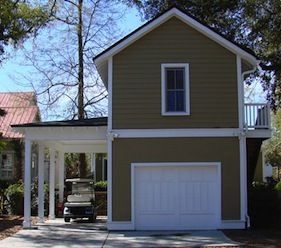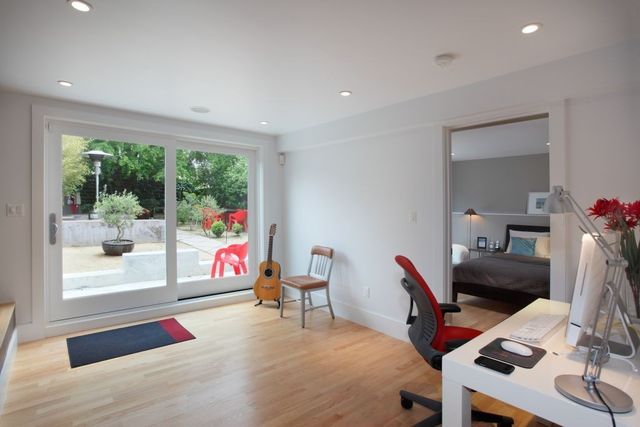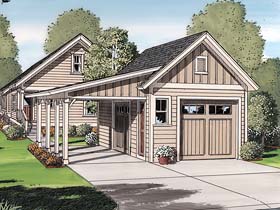
Converting your garage into a bedroom or living room is a great idea to increase your home's worth and add more living space. It is important to be able to estimate the cost of the project before you start. The size of your garage and the type you choose for the room will impact the cost of conversion.
Convert a Garage into a Master Bedroom
First, determine the purpose and function of your garage before you start to convert it into a bedroom. It could be used as a second living area for guests, or as a place where you can work remotely, or just to spend time with your family on weekends.
Consult professionals early on to determine if a garage conversion is right for you. Next, plan the space.
When converting your garage to a bedroom, you should consider insulation of the ceiling and walls, new windows, and floor insulation. This is essential to ensure your space stays cool in hot weather.

For a space to feel bright and airy, it is essential that you have the right window placement. Many building codes require at least one window with enough area to let in a minimum amount of light and ventilation, so you'll need to find a location that fits the code requirement and the space you're working with.
Another option is to integrate a skylight into your room's design. This will let natural light enter the room without blocking any noise from neighbours' homes or street traffic. To control how much natural light enters the room, you can add blinds or a skylight shade to the design.
You can also make your garage a guest quarter, or an accessory dwelling unit (ADU), in addition to your bedroom. Airbnb offers a way to make an extra income stream by renting out a guest quarter.
Friends and family visiting from out of town can enjoy a luxury retreat in a detached suite. It doesn't matter if you plan to live in the garage or rent it out. Smart features such as a security camera and doorbell can help guests stay safe.
It is possible to transform a garage into an bedroom, but the cost will vary depending on how large the space is and what kind of room you are looking for. A simple room can be converted for around $15,000, while a bathroom addition could cost up to $25,000.

A comfortable bedroom is also possible with soundproofing and insulation. If you're working with a small space, adding thick carpeting and padding to the ceiling will give it an added layer of insulation and reduce noise from outside sources.
To meet the local code requirements, you will need to install a heating system in the room and provide electrical outlets. You will need to extend existing ductwork and add electric baseboard heat. Also, you will need to install a smoke and CO detector as well as an alarm system for alerting emergency services in case there is a fire or carbon Monoxide leakage.
FAQ
How do I know if my house is in need of a renovation?
First, consider whether your home has been updated in recent times. A renovation may be a good idea if there have been no updates for several years. If your home appears brand-new, you might consider a renovation.
The second thing you should check is whether your home is in good condition. A renovation is recommended if you find holes in your drywall, peeling wallpaper, or cracked tiles. However, if your home looks great, then maybe it's time to consider a remodel.
Another factor to consider is the general state of your home. Is your house structurally sound? Do the rooms look good? Are the floors in good condition? These are crucial questions when deciding on the type of renovation to do.
Are you able to spend $30000 on a kitchen renovation?
A kitchen renovation can cost anywhere between $15000 - $35000 depending on how much you want to spend. If you want a complete kitchen overhaul, expect to pay more than $20,000. A complete kitchen remodel will cost more than $20,000. However, updating appliances, replacing countertops, or adding lighting can be done for under $3000.
An average cost for a complete renovation is between $12,000-$25,000. There are many ways to save money and not compromise on quality. For example, you can install a new sink instead of replacing an old one, which costs approximately $1000. You can also buy used appliances at half the cost of new ones.
Kitchen renovations take more time than other types. So plan accordingly. It is not a good idea to begin work in your kitchen and realize that you will run out of time.
It is best to start early. Begin to look at your options and get quotes from several contractors. Then narrow down your choices based on price, quality, and availability.
Once you have contacted a few contractors, ask them for estimates and then compare prices. Sometimes the lowest bid doesn't necessarily mean the best. It's important that you find someone with similar work experiences who can provide a detailed estimate.
Add all costs to the final cost. These may include labor or material charges, permits and so forth. Be realistic about the amount you can afford, and stick to your budget.
Be honest if you are unhappy with any bid. You can tell the contractor why the first quote isn't what you want and get another one. Don't let pride stand in the way of saving money.
Is it cheaper to remodel a bathroom or kitchen?
Remodeling a bathroom and kitchen can be costly. It may make more sense to spend money on home improvements, considering how much you pay in energy bills each month.
You could save thousands each year by making a small upgrade. A few easy changes like adding insulation to ceilings or walls can reduce heating/cooling costs by as much as 30%. Even a minor addition can increase comfort levels and increase the resale value.
It is essential to remember that renovations should be done with durable, easy-to-maintain materials. Material like porcelain tile, stainless-steel appliances, and solid wood flooring are more durable and can be repaired less often than vinyl or laminate countertops.
It is possible to reduce utility costs by replacing older fixtures with more modern models. Installing low-flow faucets or showerheads can cut water use by up to 50%. You can reduce your electricity consumption by replacing inefficient lighting bulbs with compact fluorescent lights.
What should you do with your cabinets?
It depends on whether your goal is to sell or rent out your house. You'll need to remove the cabinets and refinish them if you plan to sell. This gives buyers the illusion of brand-new cabinets and helps them visualize their kitchens after they have moved in.
But if your goal is to rent your house you will need to remove the cabinets. Many tenants complain about cleaning up after their previous tenants, including greasy fingerprints and dirty dishes.
To make the cabinets look better, you can paint them. Just remember to use a high-quality primer and paint. Low-quality paints can peel off over time.
How much would it cost to gut a home vs. how much it cost to build a new one?
Gutting a home removes everything inside a building, including walls, floors, ceilings, plumbing, electrical wiring, appliances, fixtures, etc. This is usually done when you are moving into a new home and need to make some adjustments before you move in. Gutting a home is typically very expensive because so many things are involved in doing this work. Your job may require you to spend anywhere from $10,000 to $20,000 to gut your home.
A builder builds a home by building a house frame-by-frame, then adds doors, windows, doors and cabinets to the walls. This is usually done after buying a lot of lands. Building a home usually costs less than gutting and can cost between $15,000 and $30,000.
It really depends on your plans for the space. You will probably have to spend more to gut a house. It doesn't matter if you want a home built. Instead of waiting for someone to tear it down, you can make it exactly how you want.
What order should you renovate an existing house?
The roof. The second, the plumbing. Third, the electrical wiring. Fourth, the walls. Fifth, the floor. Sixth, the windows. Seventh, doors. Eighth, it's the kitchen. Ninth, the bathroom. Tenth: The garage.
Finally, after all this work is done, you'll have everything you need to get into the attic.
You can hire someone who will help you renovate your house if you are not sure how. Renovating your own house takes time, effort, and patience. It will also cost money. If you don't have the time or money to do all the work, why not hire someone else?
Renovations aren't cheap, but they can save you tons of money in the long run. You will enjoy a more peaceful life if you have a beautiful house.
Statistics
- Windows 3 – 4% Patio or backyard 2 – 5% (rocketmortgage.com)
- Attic or basement 10 – 15% (rocketmortgage.com)
- $320,976Additional home value: $152,996Return on investment: 48%Mid-range average cost: $156,741Additional home value: $85,672Return on investment: (rocketmortgage.com)
- 55%Universal average cost: $38,813Additional home value: $22,475Return on investment: 58%Mid-range average cost: $24,424Additional home value: $14,671Return on investment: (rocketmortgage.com)
- According to a survey of renovations in the top 50 U.S. metro cities by Houzz, people spend $15,000 on average per renovation project. (rocketmortgage.com)
External Links
How To
How to Remove Tile Grout from Floor Tiles
Most people don’t realize they use tile grouting. It is used to seal joints between tiles. There are many different types of grout today. Each has its own purpose. We will demonstrate how to remove grout from tile floors.
-
First, you must ensure you have all the tools needed before starting this process. You will need a grout cutter and grout scraper.
-
Now, you will need to remove any dirt or debris from under the tile. To remove grout, use the grout cutter and gently scrape any pieces. You must be careful not to scratch any tiles.
-
Once you have cleaned everything up, take the grout scraper and use it to clean off any remaining grout. You can move on to step 4 if there is no grout left.
-
You can now move on to the next stage after you have completed all your cleaning. Make sure to take one of the rags out and soak it in water. You want to make sure that the rag gets completely wet. To ensure that the rag does not absorb water, dry it.
-
Place the wet rag onto the joint where the tile meets the wall. The grout will begin to crumble if you press down hard on the rag. Slowly pull the rag towards you and continue pulling it back and forth until you have removed all the grout.
-
Continue with steps 4 through 5, until the grout is completely removed. Rinse the ragout and repeat the process if necessary.
-
After you have removed grout, dry the tiles by wiping them with a damp cloth. Let dry thoroughly.